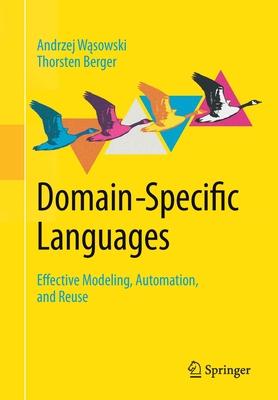The book has 13 chapters. Chapters 1 and 2 introduce and motivate DSLs. Chapter 3 kicks off the DSL engineering lifecycle, describing how to systematically develop abstract syntax by analyzing a domain. Chapter 4 addresses the concrete syntax, including the systematic engineering of context-free grammars. Chapters 5 and 6 cover the static semantics - with basic constraints as a starting point and type systems for advanced DSLs. Chapters 7 (Transformation), 8 (Interpretation), and 9 (Generation) describe different paradigms for designing and implementing the dynamic semantics, while covering testing and other kinds of quality assurance. Chapter 10 is devoted to internal DSLs. Chapters 11 to 13 show the application of DSLs and engage with simpler alternatives to DSLs in a highly distinguished domain: software variability. These chapters introduce the underlying notions of software product lines and feature modeling.
The book has been developed based on courses on model-driven software engineering (MDSE) and DSLs held by the authors. It aims at senior undergraduate and junior graduate students in computer science or software engineering. Since it includes examples and lessons from industrial and open-source projects, as well as from industrial research, practitioners will also find it a useful reference. The numerous examples include code in Scala 3, ATL, Alloy, C#, F#, Groovy, Java, JavaScript, Kotlin, OCL, Python, QVT, Ruby, and Xtend. The book contains as many as 277 exercises. The associated code repository facilitates learning and using the examples in a course.
